A growing number of firms are adopting bio-based building materials, making it one of 2022’s most prominent emerging design trends.
By: Kate Tattersfield
View the original article here
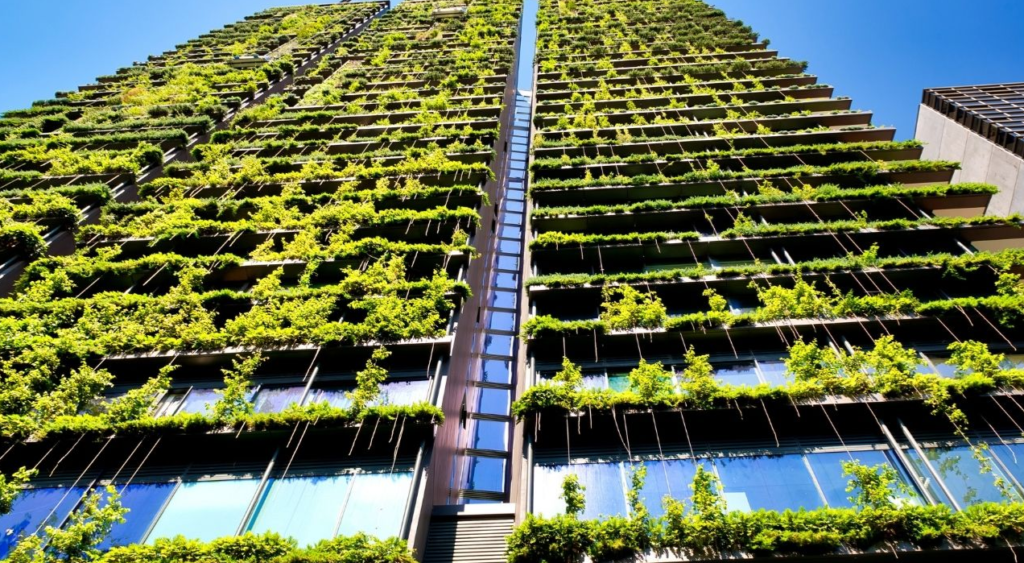
- A growing number of developers, architects and interior designers are embracing sustainable alternatives in an effort to curb climate change.
- Reducing waste in the workspace design sector is a trending topic right now.
- The built environment industry needs to look beyond operational efficiency and focus on decarbonising the materials used in its build and fit out processes.
The built environment is responsible for nearly 40% of global carbon emissions, according to research published by the Green Building Council.
28% of this derive from operational emissions – the carbon omitted by powering, heating and cooling a building – while 11% is a by-product of embodied emissions which are produced through the extraction, transportation, manufacturing, and assembly of the materials used to build, fit out and furnish a building.
Fortunately for our planet and species, there’s an appetite for change, and a growing number of developers, architects and interior designers are embracing sustainable alternatives in an effort to curb climate change.
The built environment garnered lots of attention at the COP26 summit in November 2021, with over 130 events dedicated to it.
During the summit 44 businesses, including leading architecture firms, signed a net zero carbon buildings commitment, pledging to take increased action to decarbonise the built environment across their portfolios and business activities.
The 2022 office design trends we’ve chosen to highlight are all sustainability-focused. Our list covers a range of office design aspects – from the construction materials used to how design elements are recycled. Check them out:
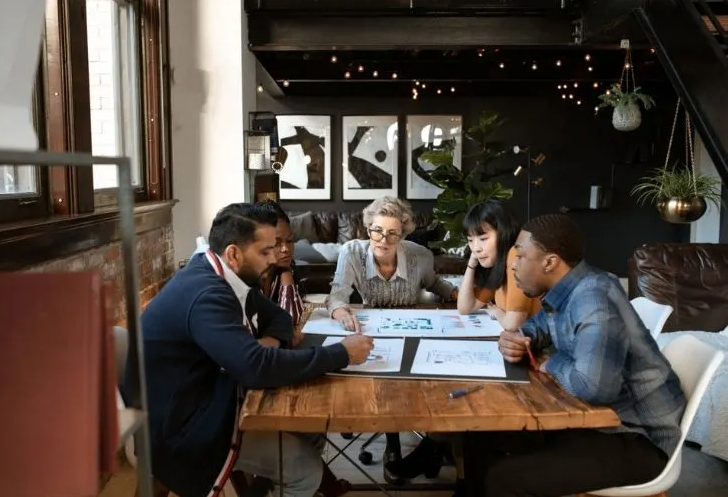
1. Bio-based design materials
Buildings – from the homes we live in to the offices we work in – have the potential to become carbon sinks as opposed to carbon generators.
But to limit global warming to 1.5C above pre-industrial levels, the built environment industry needs to look beyond operational efficiency and focus on decarbonising the materials used in its build and fit out processes.
One way to reduce embodied carbon is to manufacture using bio-based materials such as wood, straw and bamboo. Bio-based products typically require less energy and have the potential to capture and store carbon through photosynthesis.
A growing number of firms are adopting bio-based building materials, making it one of 2022’s most prominent emerging design trends.
In July 2021, Grosvenor Group, one of the world’s largest privately-owned international property businesses, launched Holbein Gardens, its first net zero carbon office development.
The firm conducted an early whole life carbon assessment to minimise upfront embodied carbon. Grosvenor Group is trialling new low embodied carbon products including cross-laminated timber in the extension, CEMFREE Concrete, Thermalite aircrete blockwork and reclaimed raised access flooring.
Redesigning an existing office building is often more eco-friendly than constructing one from scratch. However, it’s important to consider the environmental credentials of the procurement, installation and use of materials.
For example, using wood in office design isn’t necessarily sustainable if a large amount of carbon dioxide is produced in the logging, transportation and manufacturing processes, and if it ends up in landfill when the occupier moves out instead of being recycled.
Here’s a list of environmentally friendly building material options to explore and use this year, courtesy of the sustainable and biophilic design company, Barbulianno:
- Cob
- Recycled steel
- Sheep’s wool
- Reclaimed, recycled or sustainable wood
- Cork
- Straw
- Bamboo
- Recycled plastic
- AshCrete
- Ferrock
- Hempcrete
- Plant-Based Polyurethane Rigid Foam
- Enviroboard
- Mycelium
- Clay brick
- Timbercrete
- Recycled Rubber
- Newspaperwood
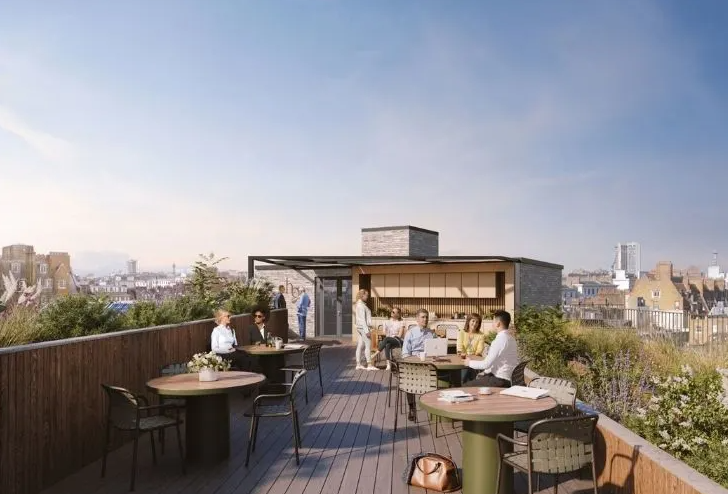
2. 3D printed office accessories
3D printing involves the creation of a 3D object from a CAD or digital 3D model. It’s a very sustainable design method because it produces very little waste compared with objects manufactured using fabrics, metals and other materials.
It also reduces supply chain carbon emissions. A study by Michigan Technological University discovered that 41-64% less energy was used to 3D print an object compared with manufacturing it overseas and shipping it to the US.
3D printing is gaining traction quickly and the office design sector is getting on board. In 2021, the international furniture brand Bene, alongside designers Pearson Lloyd and 3D-print specialist Batch.Works, launched bFriends, a new collection of 3D printed desktop accessories using 100% recycled bioplastic from waste food packaging.
The products can be recycled by Bene at the end of their life to form a “complete closed-loop production model”.
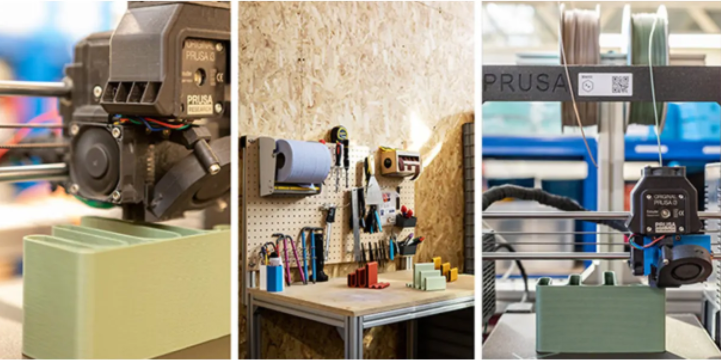
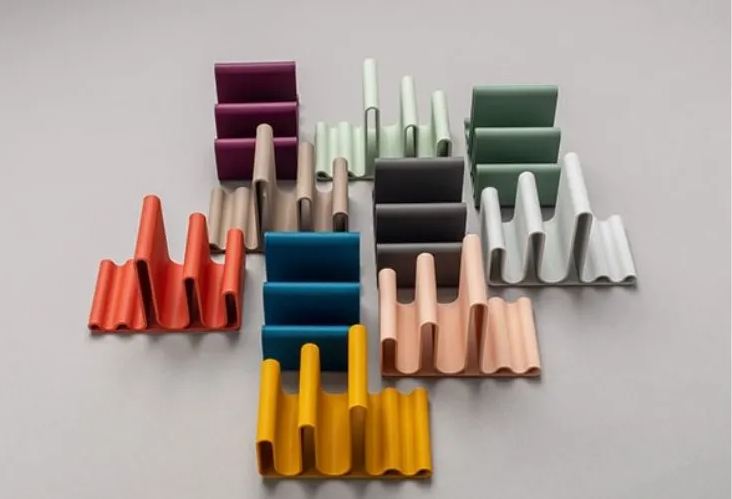
3. Biophilic design
It feels like biophilia’s been on the workspace design agenda for so long that it can’t justify being a trend anymore, but here us out.
In previous years, discourse on biophilic design was primarily concerned with plants, but 2022 will see a sharper focus on multisensory biophilic design. This includes the use of natural light, natural soundscapes and pleasant scents from the natural world that many believe have the power to energise or invoke a sense of calm.
Another aspect of biophilic design which is set to gain traction in 2022 is the use of circadian lighting. Like natural light, circadian lighting matches people’s natural biorhythms (or internal ‘clocks’) by creating an artificial ‘sunrise to sunset’ that passes through different illuminance levels and colour spectrums.
Blue-spectrum light is prioritised during daylight hours and warmer tones are introduced when the body is gearing up or winding down, e.g. at the beginning and end of the working day.
Circadian lighting is intended to amplify comfort and productivity, creating a healthier workplace experience. It can also help us feel happier by bolstering our connection to the natural world in an age where we spend the majority (around 90%) of our time indoors in manufactured environments.
According to the professional services firm, ARUP, “…the future of interior and exterior lighting design certainly lies in this balance of quality daylight and electric light working together to support our human circadian adaptation.”

4. Circular economy
We’ve already included an example of a circular economy in action (Bene), but there are many more examples besides.
A circular economy is one that involves sharing, resuing, repairing, recycling and leasing existing materials and items. It’s the opposite of a linear economy, which follows a ‘take-make-dispose’ framework.
Reducing waste in the workspace design sector is a trending topic right now. In fact, it was a focal point at last year’s Workspace Design Show.
One way to reduce waste is to avoid design change. Waste in the fit out industry is created because of design change, and design change starts at the very early stages of any project, for instance when the client brief changes.
Office designers can also avoid waste by adopting a circular mindset from the outset and partnering up with circular-based suppliers and partners like 2ndhnd, a Scottish-based company that specialises in procuring, refurbishing and reselling office furniture.
The growing awareness of sustainability coupled with the challenges posed by the pandemic has led to an increase in demand for 2ndhnd’s products. In an interview with Insider, co-owner and manager Ross Dutton explained:
“We’re being asked more and more often to strip offices of their existing office furniture, which will eventually be refurbished and resold via our platforms, but also to help in the reconfiguration of existing spaces as more flexible spaces are introduced such as breakout areas, sofas and catch-up pods.”

